If you’re new to the world of domestic parrots and interested in adding a cockatiel to your family, there’s a good chance you end up feeling overwhelmed. There’s a great deal of info out there and not everyone agrees on the best practices for caring for a cockatiel.
In this cockatiel care guide, we’re sticking stick to the facts. I scoured scientific articles and sources rather than relying on anecdotes and hearsay, so you can find out how to keep your beloved ‘tiel happy and healthy!
Make yourself a coffee and get comfy, because this is a full cockatiel care guide that contains everything you need to know.
| Name(s) (common, scientific) | Cockatiel, weiro bird, quarrion, Nymphicus hollandicus |
| Natural habitat | Arid Australian bushlands |
| Adult size | Up to 35 cm (14″) and up to 120 grams (4.2 oz.) |
| Lifespan | 25+ years |
| Noise level | Low (for a parrot) |
This post contains affiliate links. If you make a purchase, a small percentage will go directly to Psittacology at no additional cost to you. Thank you for supporting Psittacology!
Cockatiel origin & natural habitat
When figuring out how to care for an animal in captivity, it can be helpful to take a look at its natural habitat and habits. Caring for a cockatiel is no exception in this!
Cockatiels (scientifically known as Nymphicus hollandicus) are naturally found in Australia. Here, they don’t inhabit one specific area. They’re generally nomadic and follow food and water sources throughout much of the country, moving in large flocks that can contain hundreds of individuals.
Did you know? Cockatiels are the sole member of the genus Nymphicus, setting them apart from other parrot species. They are, however, closely related to cockatoos. Learn more in the article on cockatiels vs cockatoos.
The species’ natural habitat tends to consist of savannah, shrubland and grassland. Denser forests are not preferred, although it’s important that there are some trees, as cockatiels nest in hollow ones.
These habitats are not very hospitable. They can be semi-arid to very arid, with birds of prey posing a danger. Cockatiel lifespan in the wild is therefore much shorter than that of their domestic counterparts (up to 15 years vs up to 25 or more).
Tip: You can find much more information about the species’ lives in the wild in the full article on wild cockatiel habitat and life cycle.
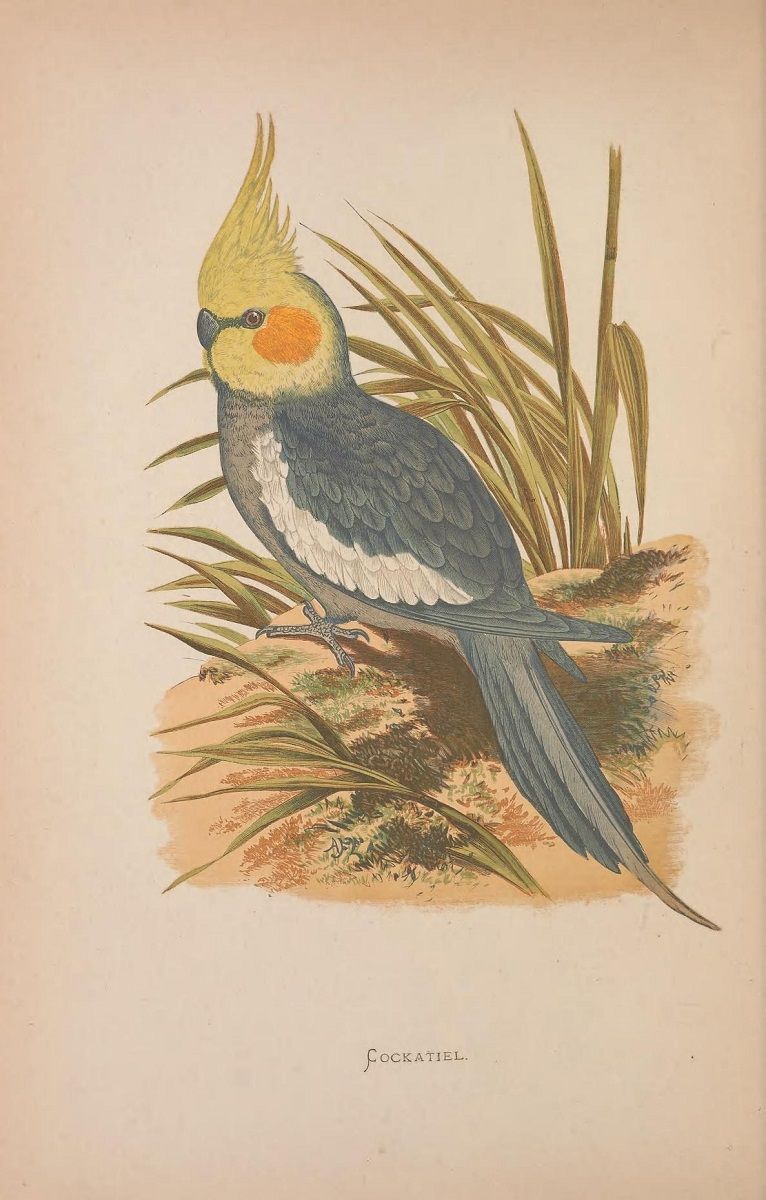
What do cockatiels eat?
There’s a reason we’re discussing diet right near the top of this article. Time and time again, research has shown that a staggering number of domestic parrots suffer from malnutrition and/or obesity.
Cockatiels are no exception. An improper diet can lead to a shortened lifespan for your beloved ‘tiel due to issues such as vitamin A or calcium deficiency, fatty liver disease, and more.
So, let’s briefly go into wild cockatiel diet before moving on to what your domestic specimen should be eating!
Wild cockatiel diet
Wild cockatiels are highly adapted seed eaters. They possess the ability to shell a small seed using just their beak and then digest it efficiently with the aid of their long and muscular gizzard (the part of the intestinal tract that’s meant for grinding foods).
Which types of seeds and other foods they eat obviously depends on where these wild cockatiels live. Jones (1987) reported a strong preference for sorghum, while other sources observed cockatiels flocking to areas with acacia trees.
Whatever their favorite food, wild cockatiels eat a varied and high-energy diet. Seeds contain plenty of fat and are perfect to sustain these active birds. The fact that they eat both fresh and dried seeds from various plant species, as well as any other foods they can find, ensures they get all the nutrients they need.
Did you know? Cockatiels are ground feeders. That’s why you’ll often find your ‘tiel scouring the ground or the bottom of its cage for leftover bits. Careful not to step on your bird!
Captive cockatiel diet
In captivity, the unfortunate truth is that we can’t offer our cockatiels the same variety of fresh and dry seeds and other foods they would find in the wild. The good thing is, we don’t need to. A seed-based diet is very fatty, which is perfect for wild birds that fly many miles a day but not quite as ideal for their domestic counterparts.
Although dry seed mixes (often consisting of canary seed, millet, sunflower seed and hemp) have long been the go-to food choice for cockatiels, research has been making it clearer and clearer that seeds alone just don’t cut it. Most veterinarians, including Psittacology’s own Dr. Daisy May, agree.
Although you don’t entirely have to ditch the seed, it’s very much recommended to use a high-quality pellet food as a staple for your cockatiel rather than a seed mix. These pellets are not as calorie-rich and contain a whole bunch of (micro)nutrients that seeds lack.
You can supplement your bird’s diet with lots of fresh vegetables as well as fresh fruits, some cooked (unsalted) grains and pasta, sprouts, and even foraged foods like some garden flowers, herbs and fresh branches.
In addition to all this, don’t forget to also provide your cockatiel with multiple sources of fresh, clean water. You can also offer a calcium block.
Tip: There is much more to be said about cockatiel diet than we can cover here. Because diet is such an integral part of caring for a cockatiel, don’t forget to also head over to: What do cockatiels eat?
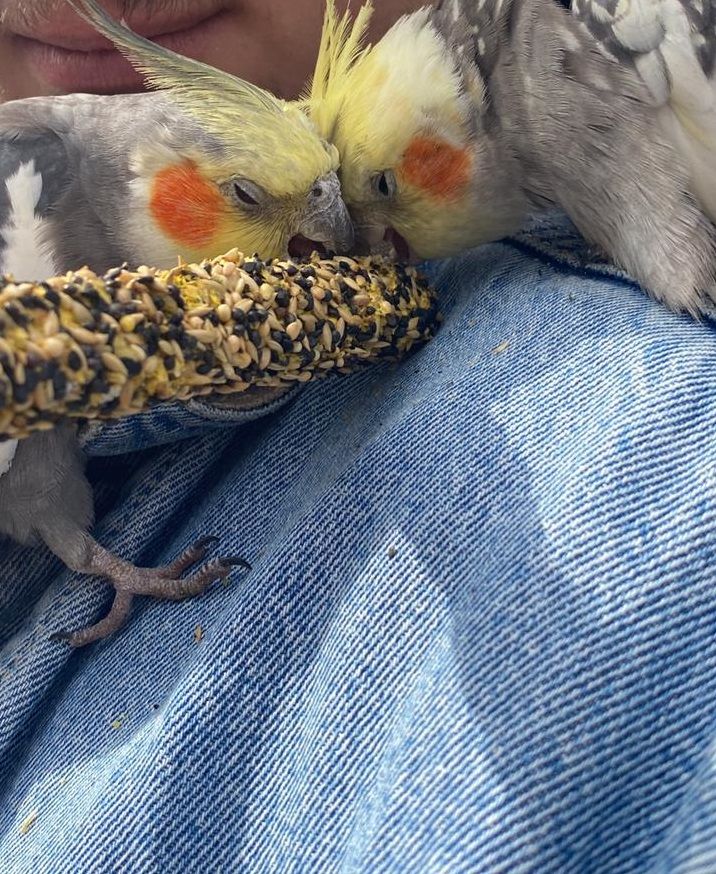
Cockatiel temperament
In the wild, cockatiels can live in flocks of hundreds of birds, which gives the huge advantage of safety in numbers. They rely on their flock for safety, reproduction, preening, and more.
Cockatiels bond with a single mate so they don’t have to waste energy each year searching for a new partner to reproduce with. They are extremely social beings and it shows.
A tame cockatiel will love hanging out on or around their owner, who they will see as a member of their flock or even their mate. In a domestic environment, after all, you are part of the flock! You have to keep their social nature in mind.
Did you know? Cockatiels in the wild will preen each other to bond and help with itchy molts. A tame cockatiel will ask you to do the same by bowing its head so you can scratch its neck!
The species is considered one of the more relaxed parrots out there, meaning they don’t tend to be loud, hyperactive, or nippy. This also means they don’t like to be manhandled. Some parrots don’t mind being picked up during playtime or even held on their backs in the palm of your hands, but cockatiels are not among them.
Like other parrot species, cockatiels are very smart as well as playful. They love exploring and learning new things.
Tip: An untamed or traumatized cockatiel might not appear to fit the above. They can be nippy and not interested at all in hanging out. Don’t give up! You can still tame and train your bird to help it relax and enjoy life.
The crest
There are plenty of indicators of parrot mood, like the state of their feathers, which are puffed out when the bird is relaxed and flat against the body when it’s alert.
The beak is another one. An open beak is used to threaten and a pretty good predictor of a bite, while a puffy parrot grinding its beak is content as can be.
Cockatiels have a handy extra indicator that can tell you a lot about how they’re feeling: their crest. Keep an eye on their head feathers and be sure to learn what the different positions mean!
- 90° angle, completely vertical: scared or very alert.
- Erect but not entirely vertical: curious, paying attention to what’s going on.
- Neutral positioning (about a 40° angle): relaxed, content.
- Flat against the head: aggressive, feeling threatened.
Tip: Don’t forget to also pay attention to your ‘tiels vocalizations. They tell you a lot about how your bird is feeling! High-pitched screams are a sure sign that’s something is going on, for example. If your tiel is whistling or singing, it’s feeling relaxed and possibly a little flirty.
Males vs females
Although in the end it all depends on socialization, female cockatiels are generally considered to be a bit more shy and less outgoing than their male counterparts.
Males tend to be more forward. They vocalize more and have a larger vocabulary. They’ll also generally be attention-seekers! You might see your male strutting, making a heart shape with his wings, knocking on objects and hopping around.
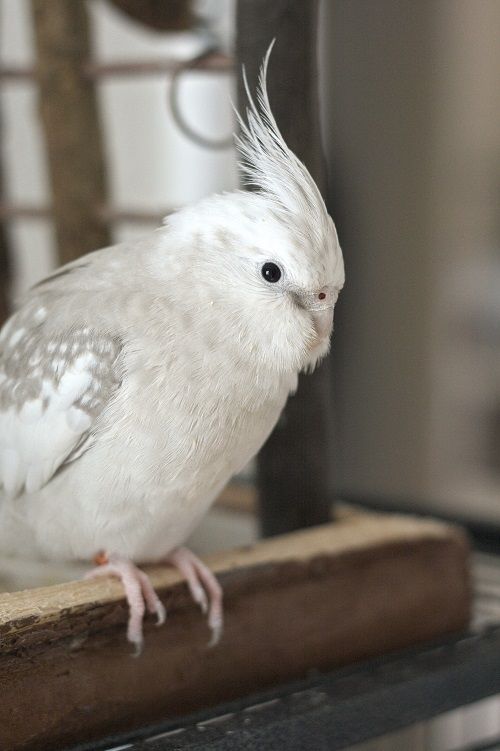
Housing for your cockatiel
A very important part of caring for your cockatiel to keep it happy and healthy is proper housing. Your bird will consider its cage its home: a safe place to retreat to for bedtime and to relax.
The exact size requirements for a cockatiel cage depend on how much time your bird spends in there. If it has free access to the rest of the room all day long, that’s obviously different compared to when you only offer a few hours of out-of-cage time a day.
In general, a cockatiel cage should be large enough to accommodate a few natural parrot perches (at least 2-3, preferably near the top of the cage). You should also be able to place the food bowls as well as plenty of toys while still leaving enough room for the bird to stretch its wings and hop or fly around.
As a rule of thumb, avoid anything that’s less than 24″ (61 cm) long, and that’s for a cage that’s used just for sleeping. Although vertical parrot cages are more popular, a rectangular one is actually ideal. Cockatiels and other parrots use horizontal space more than vertical space.
Did you know? Cockatiels are prone to night frights, where they freak out and can seriously hurt themselves. You might need to install a night light close to the cage.
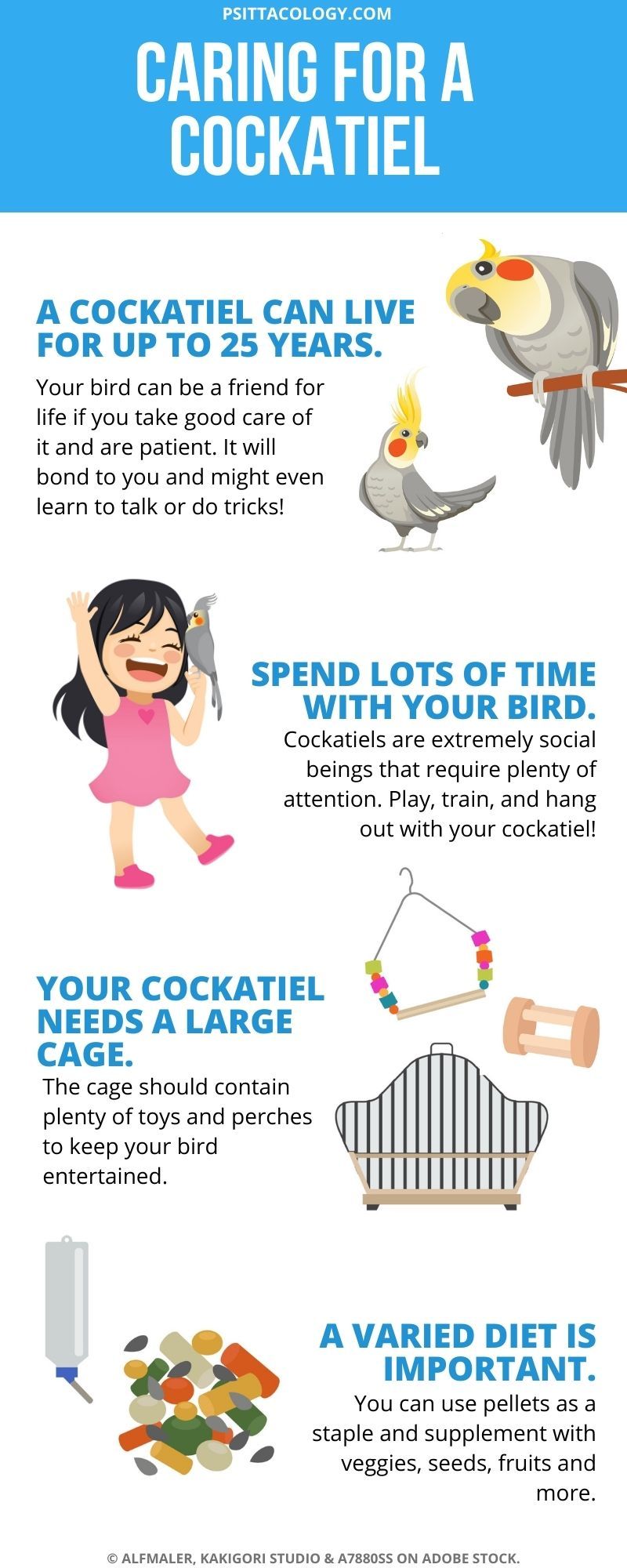
Enrichment for a cockatiel
There are many things you can do to make sure your cockatiel isn’t just healthy, but also happy and stimulated. There’s no reason your bird should be bored!
Provide multiple hours out of the cage a day to keep your ‘tiel active and encourage it to explore. Additionally, don’t forget the enrichment options discussed below.
The most important thing to consider when considering adding a cockatiel to your family is that caring for a cockatiel includes spending plenty of time with your bird. As mentioned earlier, they can naturally form large flocks and they rely on other cockatiels for safety and more. They also bond for life.
If it’s not an option for you to offer enrichment in the form of spending plenty of time with your bird daily (hanging out, training, whistling, and more), it’s crucial you get more than one cockatiel. Their social brains will wither with stress and anxiety if you don’t.
A cockatiel, like most other parrots, will act out when its social needs are not met. A deprived ‘tiel might self-mutilate by plucking its feathers, scream incessantly, or even become aggressive.
Did you know? Cockatiels should receive their social stimulation from you or their own kind. Keeping cockatiels and other parrots together is almost never a good idea.
Training
So what can you do during those hours that you should be spending with your cockatiel? Well, just hanging out is absolutely fine, but consider also investing some time in training.
Training your cockatiel has more benefits than just teaching it to do stuff. For example:
- Training is a form of enrichment and brain exercise for your cockatiel, which helps prevent boredom.
- Training helps strengthen your bond with your bird and builds trust.
- Training allows you to reward good behaviors and discourage unwanted ones.
And, of course, it’s pretty handy when your cockatiel can do basic stuff like stepping up and down. Or even fun things like tricks! You can also do talking training to teach your ‘tiel some tunes or simple phrases.
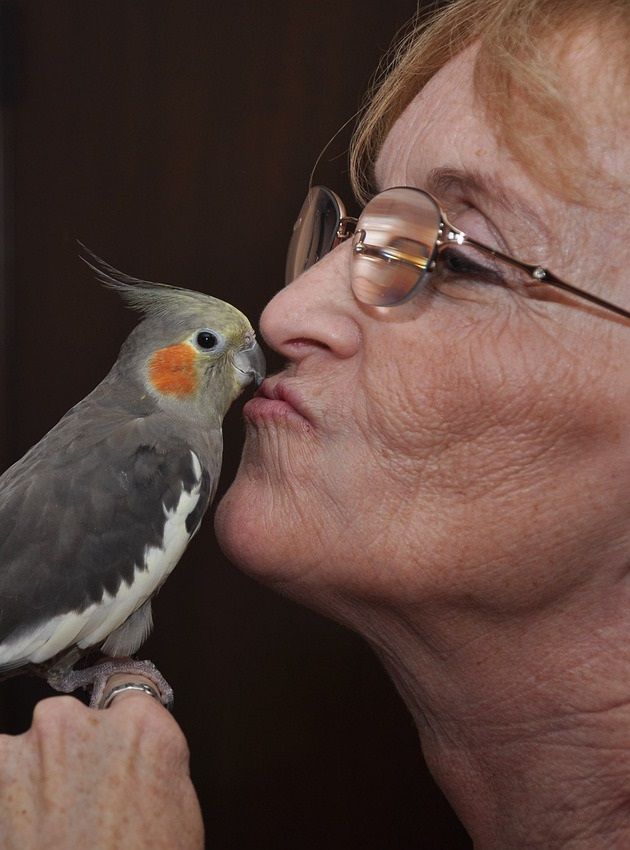
Toys
Cockatiels and other parrots tend to love playing. They like chewing, picking, lunging, shredding, puzzling and more! That’s why caring for a cockatiel involves making sure your bird has access to plenty of parrot toys.
‘Toys’ is a loose concept. There are endless brands and varieties of parrot toys out there, including loads that are suitable for cockatiels. They tend to be colored with vegetable dye to make them extra exciting and feature moving parts, dangly bits, bells, and other fun stuff. Psittacology has an article on 6 fun toys for cockatiels if you need inspiration.
If you like to DIY, there are plenty of options for that as well. You can buy pre-made parrot toy kits that allow you to make loads of toys at once. Alternatively, you could opt to keep it budget-proof it with things like shredded paper and other household items.
Tip: Buy or make a bunch of toys and rotate them every two weeks or so to keep them new and exciting.
It’s important to note that sadly, not all parrot toys sold in your local pet shop will be safe. A few notable culprits to avoid are:
- Fleece snuggle huts (birds like to chew on them, causing crop impaction)
- Rope, unless it’s completely intact. A foot can easily get stuck in frayed rope.
- Chains with open links or anything else that a beak or foot can get stuck in.
- (Looped) rings (unless they’re too big for your bird’s head to get stuck in).
- Anything painted, treated, glued, contaminated or made of unsafe metals like lead.
Tip: In addition to toys, give your cockatiel access to a bath. They love splashing around to get rid of dust and dander.
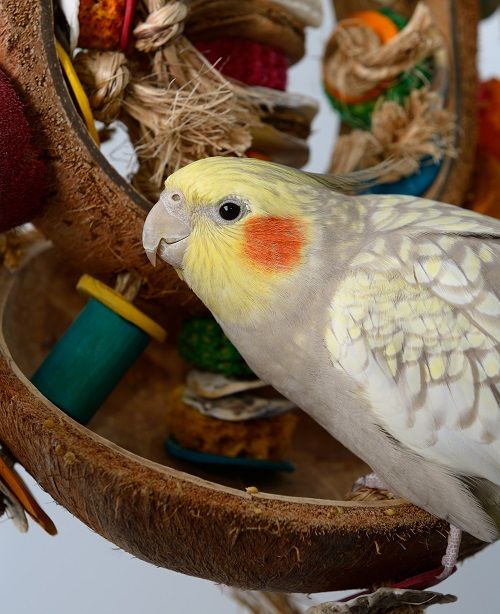
Foraging
One fantastic way to provide enrichment and stimulate natural behaviors that’s often overlooked is to encourage foraging. Think about it: in the wild, your cockatiel would spend most of its day meticulously scanning the ground for tasty morsels. In your home, you throw some food in a bowl and it’s gone in five minutes.
Make things a bit more challenging than that. Your bird will love working for its treats! That’s what its smart brain is hardwired to do.
You don’t have to do anything complicated, even sprinkling pellets on the bottom of the cage keeps your ‘tiel busier for longer than tossing them into its food bowl would.
Also consider:
- Offering whole fruits, veggies and other larger foods that your cockatiel will have to pick apart.
- Using simple foraging toys that require a bit of effort.
- Foraging for non-contaminated, bird-safe branches like Eucalyptus, which grows in the cockatiel’s natural habitat.
- A foraging box with food hidden between shredded paper and other items.
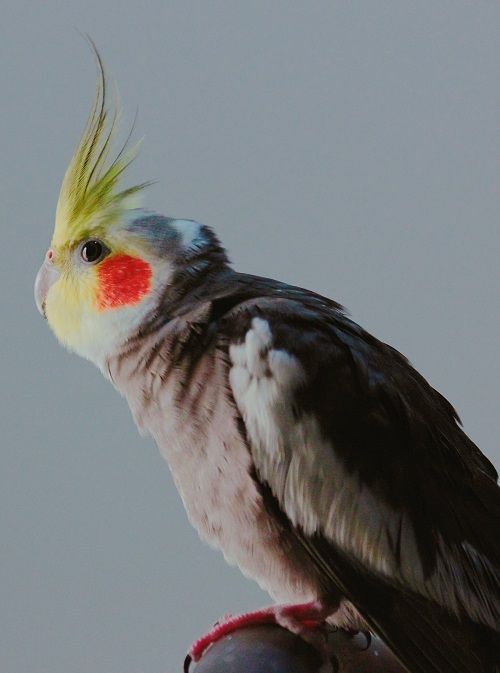
Cockatiel sounds
Are cockatiels loud?
Before bringing any type of parrot into your life, you should consider how well you handle noise. If you prefer silence, these birds are not for you. Cockatiels are considered one of the more quiet birds, but that doesn’t mean you’ll be able to enjoy 24/7 silence if you have one!
Male cockatiels are generally the more vocal ones and might spend part of their time whistling to you, their toys, or their partner. That doesn’t mean you can expect a female to be entirely quiet, though. They still produce the typical high ‘eep eep’ flock call.
It’s entirely normal for a cockatiel to scream when it’s discontented about something, and you might not always be able to figure out what it is. Sometimes it’s just noise for the sake of noise.
Consider checking out a video on cockatiel sounds and thinking about whether you can stand to hear these noises for much of the day. You can also find more information in the full article on cockatiel sound level.
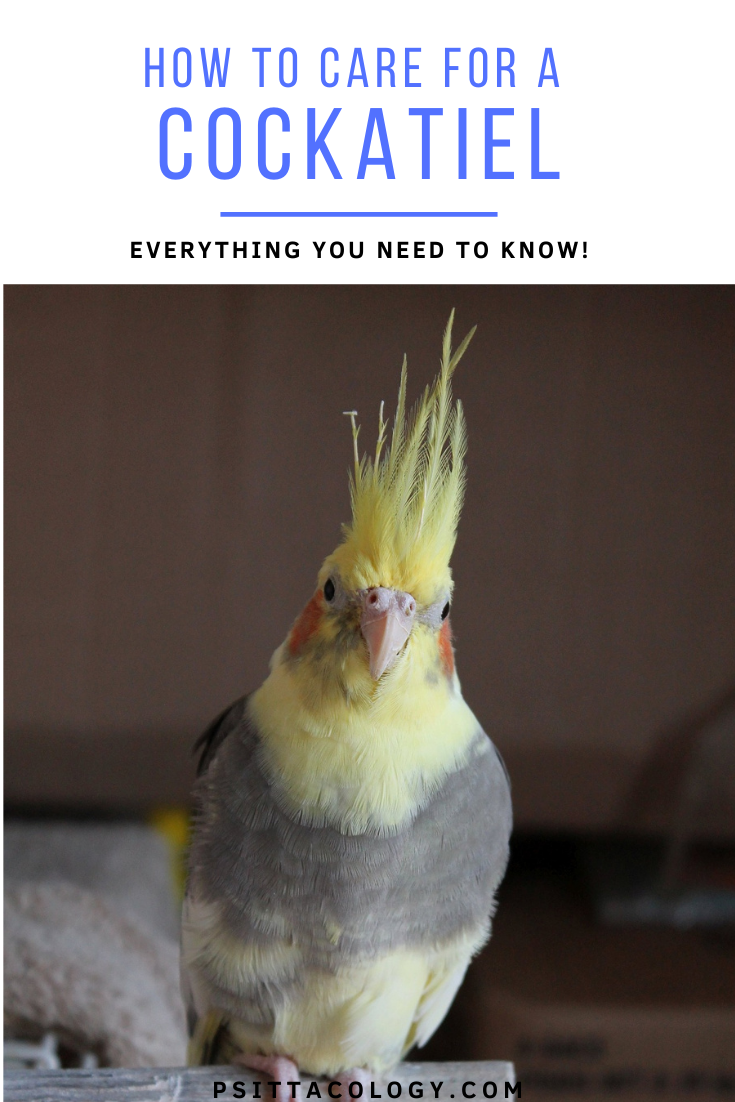
Cockatiel talking
Let’s get to the fun part! Aside from all those normal cockatiel eeps, chirps, warbles and other noises, these birds can also learn to imitate human speech.
Now, keep in mind that cockatiels are not exactly the most talented talkers. They can learn some tunes and short phrases, though, and talking training is a fun way to bond. You just have to be patient, as you might end up repeating a phrase hundreds of times before your ‘tiel picks it up.
Because males are more vocal in order to attract a mate, they tend to be the best candidates for talking training.
Tip: You can find more information on talking training in the article on cockatiel talking. Find out more about why parrots imitate human sounds in the first place in the article on why parrots talk.
Cockatiel colors
The most common cockatiel color out the is the wild type. Males will be light grey with a yellow head (as pictured below), while females sport a grey head.
As in many other pets, selective breeding has allowed for the creation of lots of other cockatiel colors and patterns. A few of the more common ones are:
- Lutino: A yellow cockatiel with orange cheek patches and red eyes due to the absence of the melanin responsible for grey coloration.
- Pied: Unique, patchy coloration.
- Pearl: Spotted pattern, which males will lose eventually. Females may or may not lose it.
- Whiteface: No yellow or orange coloration, just grey (with a white face in the males).
- Albino: Actually a whiteface lutino. The absence of yellow makes for a fully white bird!
Did you know? In wild type cockatiels, you can easily see the difference between males and females, as the ladies will have a grey head. In other color variations it’s a bit harder, and sometimes impossible (pieds, for example). You have to know the exact color mutation to be sure. Luckily there’s always DNA testing!

Caring for a cockatiel: Medical emergencies
Before we wrap up this guide to caring for a cockatiel, let’s go into one more very important, albeit less pleasant, aspect of cockatiel care.
First off, any room your parrot has access to should be made fully parrot-safe. Additionally, as with any pet, it’s important to have a plan ready for medical emergencies. You should also be able to recognize the basic symptoms of illness.
Tip: Adding a new cockatiel to your flock? You should always book a vet visit for general check-up. Better safe than sorry! An twice-annual check-up is also not a bad idea.
Frequently asked questions
It really depends. An unsocialized wild-color cockatiel from a pet store may set you back as little as $30. A hand-raised cockatiel with a fancy color mutation can cost up to $300, or even more.
Cockatiels sometimes give a good shake while grooming. If yours is shaking constantly, it’s likely stressed/startled, cold or ill. If the shivering persists, you should take your bird to an avian vet.
Please don’t! Clipping a parrot’s wings is detrimental to its (mental) health and should be avoided unless there’s a medical reason to do so.
As discussed in the article on cockatiel and budgie cohabitation, no, all parrot species should have their own separate cages.
If you have any more questions about caring for a cockatiel or want to share your own experiences with these spunky parrots, don’t hesitate to leave a comment below!
Sources & further reading
Coulton, L. E., Waran, N. K., & Young, R. J. (1997). Effects of foraging enrichment on the behaviour of parrots. ANIMAL WELFARE-POTTERS BAR-, 6, 357-364.
Jones, D. (1987). Feeding ecology of the cockatiel, Nymphicus-Hollandicus, in a grain-growing area. Wildlife Research, 14(1), 105-115.
Schoemaker, N. J., Lumeij, J. T., Dorrestein, G. M., & Beynen, A. C. (1999). Nutrition-related problems in pet birds. Tijdschrift voor diergeneeskunde, 124(2), 39.
Ullrey, D. E., Allen, M. E., & Baer, D. J. (1991). Formulated diets versus seed mixtures for psittacines. The Journal of nutrition, 121(suppl_11), S193-S205.
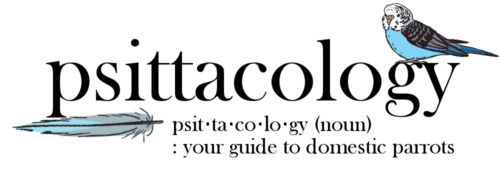

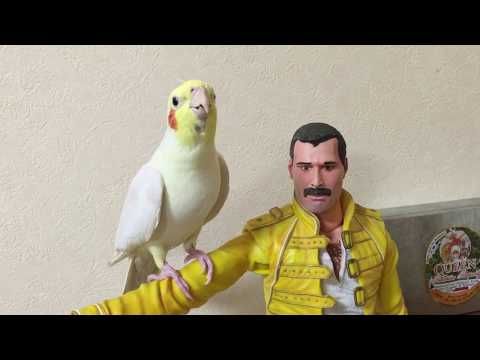
Love the ‘noise for the sake of noise’.
Haha! Thank you for this article. can relate much of what you have written and this article has confirmed a lot of the behaviour that I have curiously observed with my cockatiel. By the way, is it safe for cockatiel to shred papers? I am worried if they will eat and swallow it.
“Noise for the sake of noise” is my daily reality haha! As for paper shredding, the general consensus is that you need to observe and see if the bird swallows it or not. If they don’t, you can let them play with paper under supervision. If they do, it’s better to prevent it. One of mine is a professional confetti maker!
Just finished your article. Very informative. I had a cockatiel for 35 years who just passed. Over the years, Artie had 4 different girlfriend/ companions. The females usually lived 8-10 years. Now that he is gone we have his newest chick, Peanut. We raised her from a chick and she is a good bird. What are the things to look for to show that she would be unhappy and stressed? Should I try more personal time with her even though she is very shy? Any suggestions will be appreciated
Hey! Sorry to hear about Artie. 35 years is extremely impressive.
Any reason you think she might be unhappy or stressed? A happy and healthy cockatiel will be active and vocal (even the ladies, although they don’t tend to sing the way the boys do). During downtime, it’ll puff up its feathers, close its eyes and grind its beak, as opposed to constantly being vigilant its environment with feathers smoothened against the body. It’ll play with its toys and be reasonably okay with your presence. If she hisses and lunges every time you come near the cage, you should work on gaining her trust – it means she’s scared of you, which can really stress them out.
More personal time is always good, especially if you’re dealing with a solo cockatiel. They’re so social! If you haven’t already, you could check out the post on taming a parrot to see how you can start working with her. Remember, treats are your most important tool.
Good luck! I’m sure you can develop a bond with Peanut over time if you put in the effort. 🙂
Hey their!
I usually never leave comments on these sorta forums but I’m a more diffrent, positive and social person then compared to when I was younger in high school. I’m actually in my 20s now, beside that I had a budgie named cobalt for 5 years she passed a few weeks ago and I’ve been taking time to recover but also slowly researching cockatiel caring guides whilst waiting for and searching for a tiel to adopt someday when I find one!
I’ve read a few articles and forums but this one has been the best one out of all so I really appreciate the energy, effort, time and commitment to writing this huge and whole article for others and myself! I really appreciate your help!
I plan on getting a tiel when I can for sure after Cobalts legacy in my life. Birds have kept me alive, sain, and pushing on in life.
I hope you have yourself a great and amazing day, To the lady who wrote this amazing article have a great damn day and shine on! Keep it up!
Take care and I hope I can bring someone a smile or laught!
Timothy Li/Dark_Smilez
Thanks for commenting 🙂 I wish you the best of luck with your future cockatiel! You’re always welcome to comment here if you need any help.
These birds a a Australian native and are not cocktails this stupid name is for sales of these beautiful birds.
There real name and they should be called by there Australian name which is
QUARRION THAT IS THERE NAME AND SHOULD ALWAYS BE CALLED A QUARRION
not a dam cockawhatever
I’m sorry you take offense. Common names for animals and plants can be confusing anyway, so why don’t we just settle for calling it by its scientific name? 😉
Your article was so informative!! I really needed this! I just adopted a Cockatiel couple; Sunday & Monday. It’s only been 3 days actually. but I feel like they’re not active as much I thought. They love paddy but they don’t eat much.. . As you said the girl is kind of silent than the boy but I feel like it’s too much? I think it’s only because of the new environment but we’re really worried. Also I want to start hand feeding them, so how should I start?
Hi! Are they babies or fully grown? If they’re babies, then this is definitely worrisome. If they’re adults, then yeah, it’s most likely the change in environment. Still, if you haven’t taken them to see an avian vet yet, I highly recommend you do – it’s standard practice when you get new birds to take them for a check-up. Once you’re sure you’re in the clear and there’s nothing else going on, you can have a look at these posts:
– How to tame a parrot
– What do cockatiels hate?
– Help, my cockatiel hates me!
The first one in particular has info on getting your bird to eat from your hand. The others are just good to keep in mind if you’re new to cockatiels 🙂 good luck, I hope everything turns out alright!
Good morning.
I rescued this Cocateil and didn’t know anything about them, so I’ve been reading a lot. He has had his wings clipped and had no long tail. They have not grown back in 4 months I’ve had him, so he doesn’t fly or balance well. He’s dark gray and white, quite pretty. He loves to eat most things I’m eating plus his food. He’s been loosing the feathers on top of his head so I took him to the vet to check for mites or just molting. He said to spray him with diluted Listerine. He said to put a little warm water in the sink and spray him about every 3 days. I googled about spraying him with Listerine and it said not to. So I questioned that. I still put him in water and spray him but he doesn’t like it. I try to reinforce it with sweet talk but he still doesn’t seem to play in it. He has now started plucking his feathers under his wings and around his neck. It looks red and irritated but there’s no blood. I put white paper down in his cage and used a white towel on my shoulder and there’s no specks of blood like it’s mites. I’ve rubbed the areas with fresh aloe, And coconut oil because when he’s on my shoulder for a long time it looks like dandruff. He loves when I say pet, pet time and snuggles my cheek. I bought him a large mirror and he loves talking to it and is very vocal in his large cage and following me around the house. Since he doesn’t fly what kind of toys can I make for him? What can I do to stop his self mutilating? I cannot afford another mate for him or another vet bill 💸$$.
Hey. Good on you for reading up on cockatiel care! My reply accidentally turned into half an eBook, but hopefully it helps.
What kind of vet did you take him to? Was it an avian vet/exotic vet, or just a regular one? Spraying with Listerine is indeed not recommended. Did they say it might be mites, or did they say to apply the Listerine against feather plucking? He may be frustrated due to the wing clip and lack of tail, causing him to pluck. The “dandruff” is normal (cockatiels have a layer of down that crumbles easily – some call it “cockatiel glitter”), but of course, the bald areas aren’t. For now, you may want to look for a topical anti-itch spray designed specifically for parrots. I’d skip the baths, it stresses them out if you force them. Maybe he’ll like being misted more?
Getting a parrot to stop plucking can be difficult, especially given the fact that he’s probably still quite frustrated with his situation. In any case, remove the mirror, as that can unfortunately cause further stress. Be sure to spend as much time as possible with him and I highly recommend having a look at the articles on toys for cockatiels and parrot foraging toys. You can totally make stuff on a budget – luckily for our wallets, a cut up muffin cup is exciting to a cockatiel as an expensive store-bought toy. Rescue parrots may need some extra encouraging, but he’ll get there. Teaching him to forage will also really help distract him.
I also wrote an article about feather plucking for my friends over at Parrot Essentials that you could check out. As it says, though, your priority is to bring the bird to an avian vet to rule out other health issues. Maybe try crowdfunding or see if there are any vets that offer financial assistance? In the meantime, you could also consider posting over at Parrot First Aid on Facebook, though keep in mind that FB pet groups can be harsh or rude sometimes in my experience. There may also be groups for parrot owners dealing with plucking birds.
Great job for giving him a shot at a better life. He may struggle a bit at first, but hopefully his wing feathers grow back in soon and he’ll feel better. It can unfortunately take a while, about nine months for my clipped rescue cockatiel. Good luck and feel free to ask if you have any more questions!